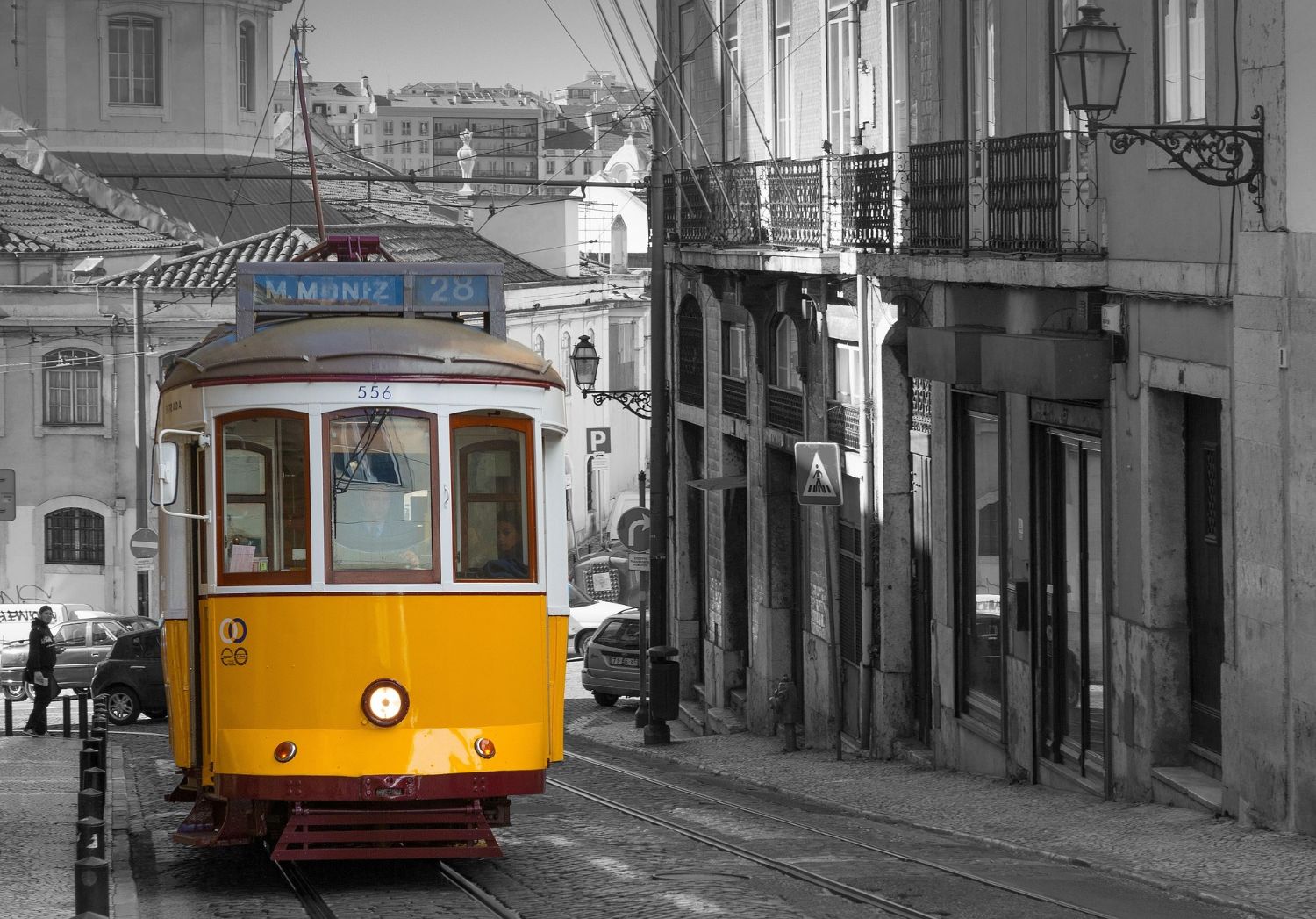You don’t just arrive in Lisbon — you tumble into it. One minute you’re gliding over the red arches of the 25 de Abril Bridge, the next you’re winding through alleys that smell of grilled sardines and jasmine. Cobbled streets catch your steps, tiled walls catch your gaze, and that Atlantic breeze? It nudges you into moments you didn’t plan but somehow needed. Welcome to the Lisbon travel guide you didn’t know you were searching for — until this city caught you off guard.
Note: This blog contains affiliate links, which means if you make any bookings via the links, I may earn a small commission at no extra cost to you — it helps keep this travel journal going strong.
Table of Contents
📍 Where Is Lisbon in Portugal?
Lisbon is perched on Portugal’s western edge, where the Tagus River meets the Atlantic Ocean. It’s a sunny capital city with deep historical roots and a perfect launchpad for exploring the Iberian Peninsula and beyond.
Lisbon doesn’t try to impress you. It’s too old for that. Too busy being itself. And that’s exactly why it works. You’ll see laundry drying between windows like neighborhood flags. You’ll hear the creak of tram 28 long before you spot it turning a hairpin bend. Locals talk with their hands, their eyebrows, their entire soul. And when the sun hits the Tagus just right? The city glows like it’s in on a secret.
But let’s be clear: this isn’t some sleepy, nostalgia-trapped capital. Lisbon’s pulse is current. Its art scene spills from galleries into the streets. Food trucks sling vegan pastéis de nata alongside age-old tascas. Rooftop bars buzz while fado singers belt heartbreak into midnight. You’re in a city where 12th-century cathedrals and 21st-century digital nomads swap glances across cafés. It’s all here, layered and lively — and this Lisbon travel guide is your cheat sheet to unlocking it.
That’s what makes a good Lisbon travel guide more than just tips and lists. It’s a map to the city’s personality. Where to lean in. Where to linger. Where to let the day unfold with zero agenda.
In this Lisbon travel guide, we’re not just ticking off sights. We’re weaving through history with a coffee in hand, riding elevators that make no sense, and decoding why locals prefer ginjinha shots to dessert. Over the next few sections, you’ll dive into Lisbon’s rich culture, quirky neighborhoods, unmissable day trips, and the spots where locals actually eat. There’s practical stuff too — how to get around, what to expect weather-wise, and what not to do unless you want to look like a total tourist.
So grab your comfiest shoes (these hills are brutal but worth it), charge your phone (you’ll need pics of every single azulejo tile), and keep reading. This Lisbon travel guide is about to rewrite what you think a city break can be.
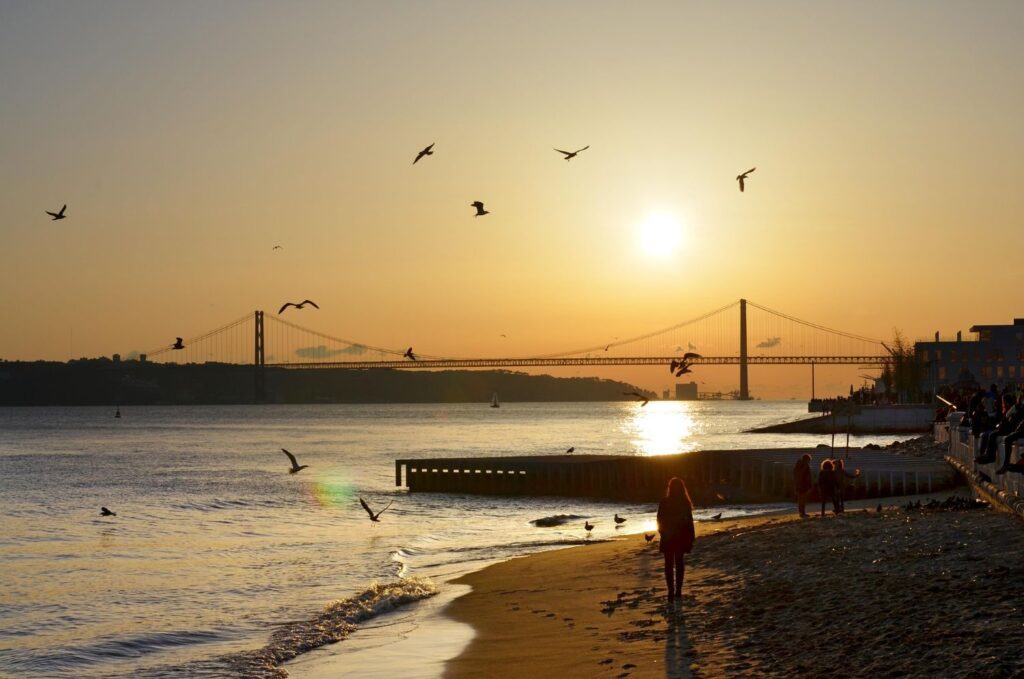
Stories in the Stone – Lisbon’s Past & Neighborhood Pulse
Lisbon doesn’t wear its history — it is its history. You’ll feel it underfoot as you walk calçada Portuguesa — those mosaic sidewalks laid by hand. You’ll hear it in the melancholic strain of fado drifting out of a side street in Alfama. And you’ll see it, impossibly, in the sunlight bouncing off golden stone walls that have weathered everything from Roman columns to 1755’s devastating earthquake.
This isn’t just background noise. It’s what makes a Lisbon travel guide worth digging into — because without understanding where the city’s been, you can’t fully appreciate where it’s going.
Founded by the Phoenicians and ruled by Romans, Visigoths, Moors, and Crusaders, Lisbon is one of Europe’s oldest cities. But it doesn’t feel stuck in time. The Bairro Alto nightlife scene hums above ancient walls. Modern art installations flank centuries-old convent ruins. And Belém’s riverside serenity — home to the Jerónimos Monastery and the Monument to the Discoveries — is where Portugal’s age of exploration set sail. A solid Lisbon travel guide should steer you here early, before the pastel de nata sugar crash kicks in.
Let’s be real: Lisbon’s history has teeth. It’s not all glory and grandeur. You’ll learn about the Inquisition, the dictatorship under Salazar, and the years of censorship that followed. But you’ll also see how those shadows gave way to light — a city reborn post-1974 Carnation Revolution, now brimming with creative resistance, pride, and punk energy.
Wander Alfama, and you’re walking through Lisbon’s oldest district — a maze of steep alleys, brightly painted facades, and locals who know your face by your second pass. It’s where fado is sung from the gut and grandmothers still sell homemade liquor from their front steps. Any Lisbon travel guide that skips this soulful, lived-in quarter is missing the heart of the city.
Shift over to Chiado for a more literary flair. Here’s where Fernando Pessoa once scribbled verses over coffee. Today, you’ll find elegant bookshops, street performers, and galleries all coexisting with pastelaria counters serving espresso shots and custard tarts. This neighborhood is a must for your Lisbon travel guide itinerary — equal parts poetic and buzzy.
Then there’s the LX Factory — a gritty former industrial site turned creative hotspot. Think street murals, rooftop bars, and design studios wrapped inside old warehouses. Come on a Sunday for the market. Stay for the view, the vibe, and the entirely-too-cool record shop you didn’t mean to fall in love with.
Of course, neighborhoods like Mouraria and Graça give you different shades of Lisbon — less polished, more lived-in. You’ll see immigrant communities shaping the future of Portuguese culture, alongside punk bars and miradouros (viewpoints) that steal your breath without warning.
This is why a truly useful Lisbon travel guide doesn’t just list places — it helps you feel the rhythm of each district, understand their mood, and appreciate how wildly different and brilliantly connected they all are.
Want the full picture? Let the streets tell it. And let this Lisbon travel guide remind you — getting lost here isn’t a mistake. It’s the whole point.
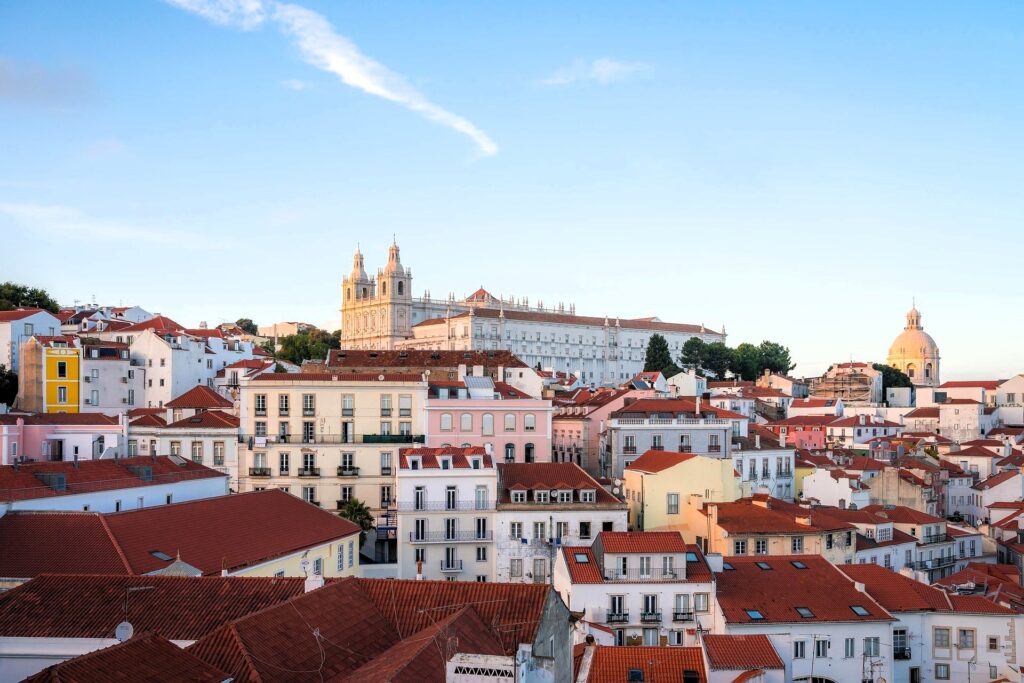
What to Actually Do – The Real Lisbon Travel Guide Highlights
You can burn out fast in Lisbon if you treat it like a checklist. Cathedrals, castles, cafés — click, click, done. But the best things to do here? They sneak up on you. They’re the slow sips, the spontaneous detours, the moments where a Lisbon travel guide becomes less of a map and more of a mood.
Start High: Castelo de São Jorge
If you only do one “touristy” thing, let it be the castle. Perched above the Alfama rooftops, São Jorge Castle serves up the kind of panoramic view that makes your phone camera sweat. But it’s not just the view — it’s the peacocks strutting along the battlements and the sense that you’re standing on layers of Roman, Moorish, and medieval Portuguese history.
Ride the Tram 28 — Once
Yes, it’s crowded. Yes, you might have to elbow your way in. But no Lisbon travel guide would be complete without this classic wooden tram that rattles through the city’s steepest, twistiest streets. It’s a living time capsule on rails — just watch your wallet, and maybe skip the rush hour stampede.
Dive Into the Time Out Market
Let’s cut through the hype — Time Out Market is no hidden gem, but it is a smart one-stop shop for a taste of modern Lisbon. From Michelin-pedigree bites to chocolate mousse that makes you rethink chocolate entirely, it’s a curated intro to Portuguese flavors. Use it as a launchpad — then go find the no-frills joints it’s inspired by.
Sunset at Miradouro da Senhora do Monte
Miradouros (viewpoints) are Lisbon’s reward for every brutal uphill climb. Senhora do Monte is the local favorite — a wide-open lookout where travelers, teens, and guitar-strumming strangers gather at golden hour. Grab a bottle of vinho verde, snag a spot on the wall, and let the city do its thing. A proper Lisbon travel guide will tell you: this is the moment the city wins you over.
Get Lost in MAAT or Museu do Azulejo
Craving culture with a twist? Head west to MAAT — Lisbon’s boldest modern art museum, all curves and glass along the river. Or lean historic at the Museu Nacional do Azulejo, where tilework tells the city’s story in blue and white. Either way, you’re doing it right.
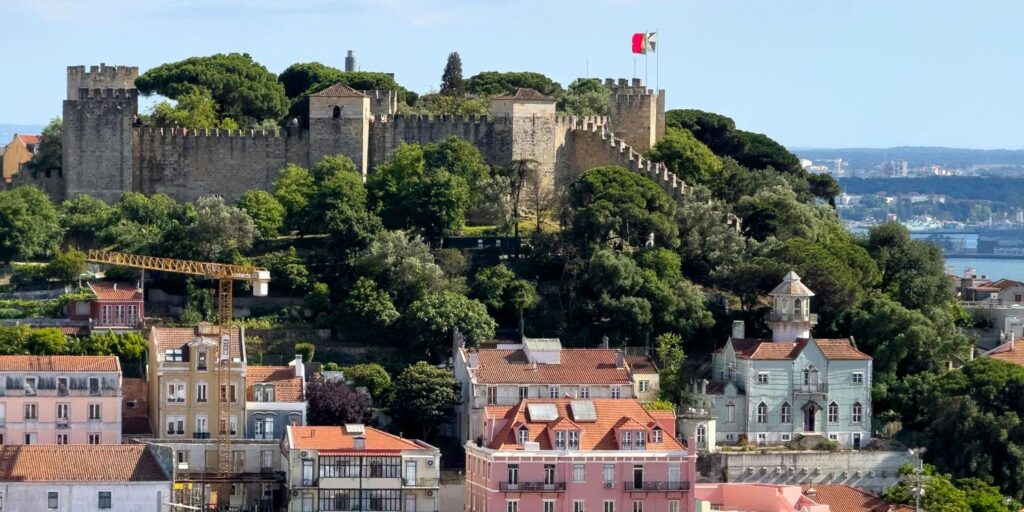
Day Trips Worth Escaping For
The beauty of a solid Lisbon travel guide is it reminds you when to get out of town.
Sintra – Straight out of a Fairy Tale
Sintra isn’t subtle. It’s got rainbow palaces, misty forests, and enough UNESCO swagger to make your head spin. Visit the technicolor madness of Palácio da Pena, then chill in the gardens of Quinta da Regaleira, where secret tunnels and symbolic wells hide around every corner.
Cascais – Chill Coastal Escape
Just 40 minutes by train from the city, Cascais is where Lisbonites go to breathe. Think beach cafés, ocean views, and cycling paths along jagged cliffs. Want a breezy, beach-town vibe without the fuss? This is your move — and your Lisbon travel guide just leveled up.
Cabo da Roca – The Edge of Europe
Stand on a wind-whipped cliff and squint west. There’s nothing between you and America. Cabo da Roca is continental Europe’s westernmost point — raw, rugged, and dramatic. It’s the kind of place that quiets the noise. Bring a jacket. Bring someone you like.
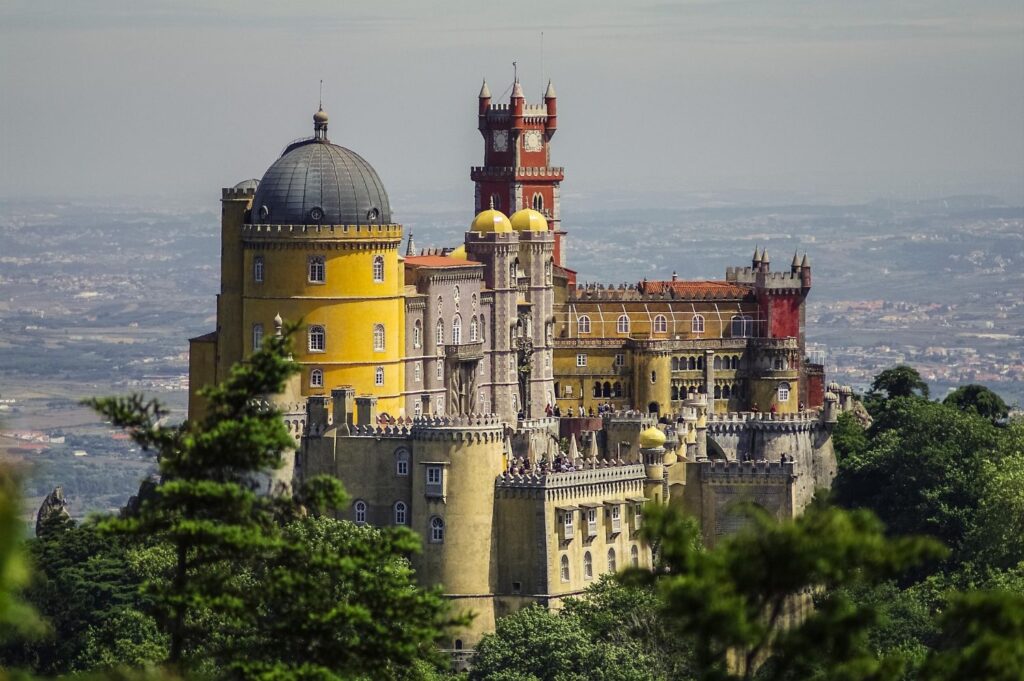
If you’re following this Lisbon travel guide closely, you’ll notice something: it’s not about checking boxes. It’s about catching rhythms. Some cities demand to be conquered — Lisbon just wants to be felt.
Eat, Move, Time It Right – Lisbon Travel Guide Essentials
If you haven’t eaten your way through Lisbon, have you even been? Forget the starched-tablecloth stereotype — Lisbon’s food scene is soulful, surprising, and often served from behind a counter by someone’s grandmother. A good Lisbon travel guide doesn’t chase stars — it follows smells.
Where to Eat & Drink Like You Belong
Start with a pastel de nata — the flaky, custardy pastry that launched a thousand cravings. The classic spot is Pastéis de Belém, still cranking them out near Jerónimos Monastery since 1837. But the locals? They’ll point you to Manteigaria for a warmer, slightly saltier version that hits just right.
For lunch, wander into a tasca — Lisbon’s no-frills taverns where the menu is scribbled on the wall. Go for grilled sardines if they’re in season, or bacalhau à brás (shredded salt cod with eggs and potatoes). Wash it down with vinho verde or a cheeky Super Bock.
Need a nightcap? Skip the overpriced cocktails in tourist zones. Head to a rooftop bar like Park (hidden on top of a parking garage in Bairro Alto), or sip ginjinha from a tiny hole-in-the-wall near Rossio. A Lisbon travel guide worth its salt will tell you: the best nights start casually and end somewhere unforgettable.
Getting Around Without Losing Your Mind (or Ankles)
Lisbon is walkable — if your calves are in shape and your shoes are forgiving. The hills are real, and some cobblestones seem designed to test your will. So pace yourself, take breaks, and use the elevators and funiculars (Elevador da Glória and Santa Justa are legit city icons).
Public transport is solid. The metro is clean, safe, and color-coded for sanity. Trams and buses fill in the gaps, and the Viva Viagem card makes all of it easier. If your Lisbon travel guide recommends a car rental, ignore it — unless you’re planning big day trips outside the city.
Rideshares like Bolt and Uber are plentiful, and taxis are fine — just confirm they’re using the meter. The airport’s only 15–20 minutes from the city center, and you can hop a metro straight there if you travel light.
When to Come for the Best Version of the City
Spring (April to June) is peak vibe. The jacaranda trees bloom purple, the breeze is warm but not punishing, and you’ll catch street festivals everywhere. June’s Santo António festival turns Alfama into a block party of grilled sardines and DIY decorations.
Summer is sunny and buzzing, but also tourist-packed. Fall (September–October) offers golden light and calmer streets. Winter’s mild, with fewer crowds and cozy vibes — especially in candlelit fado bars. A smart Lisbon travel guide helps you plan for when Lisbon fits you.
🌟 DID YOU KNOW?
Lisbon is home to the world’s oldest operating bookstore — Bertrand Bookstore, open since 1732. Tucked into the Chiado district, it still sells books under vaulted ceilings and even has its own Guinness World Record.
FAQs – Fast Answers From Your Lisbon Travel Guide
1. Do people speak English in Lisbon?
Yes — especially younger folks and anyone in hospitality. Still, a “bom dia” goes a long way.
2. Is Lisbon expensive?
Not by Western Europe standards. You can eat well and stay central without draining your budget.
3. What’s the tipping culture?
Not expected, but rounding up or leaving 5–10% is appreciated in restaurants.
4. Are pickpockets a problem?
They exist, especially on trams and in tourist zones. Keep your stuff close and you’ll be fine.
5. Can I drink the tap water?
Absolutely. It’s clean, safe, and free.
6. What’s the best souvenir to bring back?
Tiles (azulejos), canned sardines, or anything from local markets in Alfama or Campo de Ourique.
7. Is Lisbon LGBTQ+ friendly?
Yes. The scene is vibrant and inclusive, especially in Bairro Alto and Príncipe Real.
8. What kind of power plugs do they use?
Type C and F (two round pins), 230V. Bring a converter if you’re coming from outside Europe.
9. How many days do I need?
Three minimum. Five or more to slow down and really connect with the city.
10. Can I use euros?
Yes — Portugal uses the euro (€), and cards are widely accepted.
Useful Information
Booking.com – Great for comparing hotels, especially if you want to stay close to historic neighborhoods like Alfama or Chiado.
Viator – A reliable go-to for tours and skip-the-line access, especially for Sintra day trips and guided city walks.
Trainline – The easiest way to book regional trains like Lisbon to Cascais or Sintra — fast, no translation stress.
DiscoverCars – Ideal if you’re planning to rent a car for a longer trip across Portugal or to reach remote coastal towns.
GetYourGuide – Excellent for finding quirky local experiences — like tile-painting workshops or evening fado dinners.
Radical Storage – If you’re in Lisbon just for the day or between check-ins, this is a handy solution to stash your luggage.
Trip.com – A solid platform for bundling hotels and flights if you’re combining Lisbon with other European stops.
Vrbo – Great for families or groups — apartments with kitchens in walkable Lisbon neighborhoods.
Klook – Handy for booking transport cards and museum passes before you arrive — no paper tickets needed.
Expedia – Best used here for hotel and flight deals — especially if you’re flying into Lisbon Humberto Delgado Airport.
Trivago – Ideal for quick price comparisons when you’re hotel hunting in popular districts like Baixa or Bairro Alto.
Agoda – A good alternative for travelers coming from Asia — often shows exclusive room rates for Lisbon stays.
VisitPortugal.com – The official national tourism site with updated cultural events, safety info, and local insights.
VisitLisboa.com – Lisbon’s official tourism board site — maps, attraction passes, event calendars, and more.
Related Posts:
Algarve Portugal Travel Guide: Beaches, Towns & Tips for 2025


